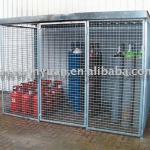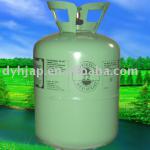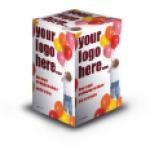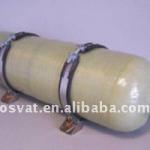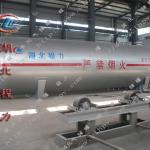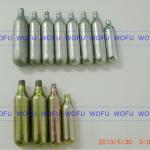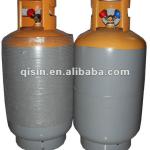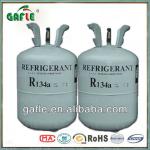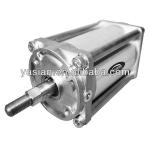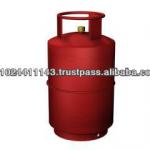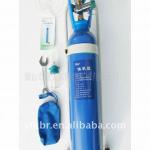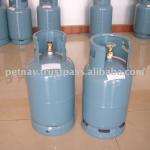Seamless Steel GAS CYLINDER For LOX/LAR/LIN/LCO2/LNG/C2H4/CNG - SEFIC-50
| Material: Steel,30CrMo | Use: Industrial Gas | Pressure: High | Place of Origin: China (Mainland) |
| Brand Name: SEFIC | Model Number: SEFIC-50 | Working Pressure: 200BAR | Test Pressure: 300bar |
| Color: Black, Blue, white, Green, as clients requred | Head Protection: Tulip Cap, common cap, | Wall Thickness: 6.2mm | Weight: 65Kg |
| Certificate: T PED / 99/36 | Loading: 250pcs/20GP by Pallet | Valve: to be installed or as clients requirement |
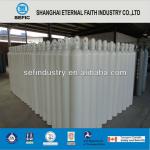
SeamlessSteel Gas Cylinder
(1) Gas: LOX/LIN/LAR/LNG/LPG/LCO2 (
2) 0.5L -150L
(3) 150BAR/200BAR/300BAR
(4) CE/TPED / GB / DOT
Cylinder Introduction:
Agas cylinderis a pressure vessel used to store gases at above atmospheric pressure. High pressure gas cylinders are also called bottles.
Nomenclature differences
In the United States, "bottled gas" typically refers to liquefied petroleum gas. "Bottled gas" is sometimes used in medical supply, especially for portable oxygen tanks. Packaged industrial gases are frequently called "cylinder gas", though "bottled gas" is sometimes used.
The United Kingdom and other parts of Europe more commonly refer to "bottled gas" when discussing any usage whether industrial, medical or liquefied petroleum. However, in contrast, what the United States calls liquefied petroleum gas is known generically in the United Kingdom as "LPG"; and it may be ordered by using one of several trade names, or specifically as butane or propane depending on the required heat output.
Design codes and application standards along with the cost of materials dictated the choice of steel with no weldings for most gas cylinders, treated to be anti corrosive. There have been some newly developed lightweight gas cylinders from composite materials. Due to the very high tensile strength of carbon fiber, these vessels can be very light, but are much more difficult to manufacture
Regulations and cylinder testing
The transportation of high pressure cylinders is regulated by many governments throughout the world. Various levels of testing are generally required by the governing authority for the country in which it is to be transported. In the United States, this authority is the United States Department of Transportation (DOT). Similarly in the UK, the European transport regulations (ADR) are implemented by the Department for Transport (DfT). For Canada, this authority is Transport Canada (TC). Cylinders may have additional requirements placed on design and or performance from independent testing agencies such as Underwriter's Laboratory (UL). Each manufacturer of high pressure cylinders is required to have an independent quality agent that will inspect the product for quality and safety.
Within the UK the "competent authority" — the DfT — implements the regulations and appointment of authorised cylinder testers is conducted by UKAS, who make recommendations to the VCA for approval of individual bodies.
There are a variety of tests that may be performed on various cylinders. Some of the most common types of tests are hydrostatic test, burst test, tensile strength, Charpy impact test and pressure cycling.
During the manufacturing process, vital information is usually stamped or permanently marked on the cylinder. This information usually includes the type of cylinder, the working or service pressure, the serial number, date of manufacture, the manufacture's registered code and sometimes the test pressure. Other information may also be stamped depending on the regulation requirements.
High pressure cylinders that are used multiple times — as most are — can be hydrostatically or ultrasonically tested and visually examined every few years. In the United States, hydrostatic/ultrasonic testing is required either every five years or every ten years, depending on cylinder and its service. Helium gas cylinders have the highest pressures possible when full, around 1000 atmospheres.
Safety and standards
Because the contents are under pressure and are sometimes hazardous, there are special safety regulations for handling bottled gases. These include chaining bottles to prevent falling and breaking, proper ventilation to prevent injury or death in case of leaks and signage to indicate the potential hazards. Installing and replacing gas cylinders should be done by trained personnel. If a compressed gas cylinder tips over, causing the valve block to be sheared off, the rapid release of high pressure gas may cause the cylinder to be violently accelerated, potentially causing property damage, injury, or death. To prevent this, cylinders are normally secured to a fixed object or transport cart with a strap or chain.
In a fire, the pressure in a gas cylinder rises in direct proportion to its temperature. If the internal pressure exceeds the mechanical limitations of the cylinder and there are no means to safely vent the pressurized gas to the atmosphere, the vessel will fail mechanically. If the vessel contents are ignitable, this event may result in a "fireball". If the cylinder's contents are liquid, but become a gas at ambient conditions, this is commonly referred to as a Boiling Liquid Expanding Vapour Explosion (BLEVE).
Medical gas cylinders in the UK and other countries have a seal of Wood's metal between the valve block and the cylinder body. This seal melts at a comparatively low temperature (70°C) and allows the contents of the cylinder to escape in a controlled fashion, lessening the risk of explosion.
More common pressure relief devices are of a simple burst disc type. In these, a small burst disc is installed in the back of the valve. A burst disc is a small metal gasket engineered to rupture at a pre-determined pressure. Some burst discs are backed with a low-melting-point metal, so that the valve must be exposed to excessive heat before the burst disc can rupture.
The Compressed Gas Association sells a number of booklets and pamphlets on safe handling and use of bottled gases.
Cylinders should be properly labeled and securely stored. Substances that may react with each other, e.g., oxidizers and flammable materials, should not be stored in close proximity.
1. CYLINDER PRODUCTION:
2. CYLINDERS MARK:
3. CERTIFICATE:
4. CYLINDER PACKING AND LOADING:
5. Pls send us enqury if you have any demand on it.
| Packaging Detail:PACKED BY PALLETS, WRAPPED BY PVC, |
| Delivery Detail:25DAYS |



